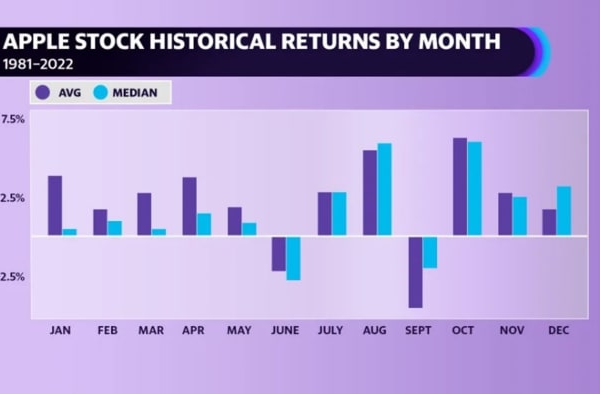
The iMac G3, unveiled by Apple CEO Steve Jobs on May 6, 1998, marked a revolutionary moment in computer design that forever altered the course of technology. As the original iMac, this vividly colored and translucent device emerged as a beacon of Apple’s design revolution, signifying the company’s resurgence from near-collapse. With its playful aesthetics, the iMac G3 featured groundbreaking elements that bridged functionality and style, propelling the brand into the new millennium. The history of iMac began with Jobs’ vision of making computers more accessible and appealing to consumers, a mission that struck a chord across the globe. By transforming the perception of personal computers, the iMac G3 not only saved Apple but also positioned it as a trailblazer in the tech industry, leading to the iconic products we recognize today.
The original iMac, often referred to as the iconic Steve Jobs iMac, was not just another entry in the computing market; it represented a pivotal shift in how computers were designed and perceived. Dubbed the iMac G3, this groundbreaking device catalyzed an Apple design revolution that redefined user experience through its unique blend of vibrant colors and modern aesthetics. This all-in-one computer marked the dawn of an era where technology married creativity, making computing more user-friendly and visually appealing. The impact of this colorful machine echoes through the subsequent evolution in Apple’s product line, influencing everything from laptops to handheld devices. Thus, the legacy of the original iMac continues to shape both consumer expectations and tech innovations.
The Original iMac: A Turning Point for Apple
On May 6, 1998, the unveiling of the original iMac marked a significant turning point for Apple, revitalizing a company that had been struggling for years. With its vibrant colors and translucent design, it broke the monotonous trend of beige computers that dominated the market. This design revolution championed by Steve Jobs was not merely about aesthetics; it was a bold statement that Apple was ready to reclaim its place in the technology landscape. The iMac combined cutting-edge technology with user-friendly features, making it accessible to a broader audience. It reflected the ethos of the internet age and highlighted Apple’s commitment to innovation and forward-thinking design.
The original iMac, often referred to as the iMac G3, was instrumental in reshaping consumer perceptions of personal computers. With a playful yet sophisticated design, it became synonymous with Apple’s identity as a design-focused tech company. The enthusiastic response from consumers underscored the notion that computers could be both functional and visually appealing. Jobs’ vision to merge simplicity with advanced technology paved the way for future products like the iPhone and iPod, cementing the iMac’s status as an indelible landmark in the history of tech.
The iMac G3 Features: Unmatched Distinctiveness
One of the standout features of the iMac G3 was its striking design coupled with unique specifications. This all-in-one computer was equipped with a 233 MHz PowerPC G3 processor, which was a significant boost over many competitors of that era. Additionally, it came with a 4GB hard drive, 32MB of RAM, and a choice of graphics options that allowed for a more visually rich experience. This combination of hardware made it accessible for everyday users, particularly those looking to embrace the internet as a vital component of their daily lives. Moreover, the omission of a floppy disk drive was a bold move, and while it sparked controversy, it highlighted Apple’s commitment to innovation over tradition.
The iMac G3’s aesthetic was equally groundbreaking, especially with its colorful variants such as Bondi Blue, which became iconic in its own right. Critics initially derided the design as toy-like, particularly the well-known ‘hockey puck’ mouse; however, the overall reception was overwhelmingly positive. This revolutionary design not only appealed to a new generation of users eager for a fresh perspective on computing but also set a new standard for computer design. The iMac G3 exemplified how an engaging design could market technology as part of a lifestyle, redefining consumer expectations in the years that followed.
The History of iMac: From G3 to Today
The original iMac launched a saga that has deeply influenced personal computing and tech culture as a whole. Following the success of the iMac G3, Apple continued to evolve and innovate its line of desktops and laptops, introducing variations in color and style that maintained the playful spirit of the original design. Each iteration of the iMac, from the DV series to the more recent M1-powered models, has carried forward the legacy of the inaugural iMac while adapting to changing technologies and consumer needs. This journey illustrates Apple’s ability to blend form with function, showcasing how design can transcend mere utility.
Today, the essence of the iMac continues to thrive with its sleek, modern aesthetics and powerful performance capabilities. The introduction of the M1 chip in the latest iMac models is a nod to the innovative spirit pioneered with the iMac G3. By incorporating vibrant colors reminiscent of their earlier designs, Apple has not only honored its storied past but has also appealed to both nostalgic consumers and new users eager to experience what the iMac has to offer. The history of the iMac is encapsulated in its evolution – a testament to Apple’s status as a design leader in the technology domain.
The Impact of the iMac G3 on Modern Technology
The iMac G3’s influence extends beyond its immediate commercial success; it fundamentally changed how technology could engage users. By emphasizing user experience, Apple shifted the focus from merely providing tech-savvy products to creating devices that resonated emotionally with consumers. The iMac G3 was more than just a computer; it was a lifestyle choice, representing freedom, creativity, and accessibility in technology. This paradigm shift catalyzed a transformation across the tech industry, motivating competitors to reevaluate how they approached design and user engagement.
Furthermore, the iMac G3 paved the way for subsequent Apple innovations. The seamless integration of hardware and software, along with the maintaining of aesthetic appeal, became hallmarks of all future Apple products. Its introduction and success ignited the design-led revolution in tech that led to the development of devices like the iPod, iPhone, and beyond. Today, as we look back at the iMac G3, we see a pivotal moment that not only resurrected Apple but also set into motion the transformation of personal computing in the digital age.
Jony Ive: The Visionary Behind the iMac
Jony Ive played a pivotal role in shaping the design of the iMac G3, embodying the blend of creativity and functionality that Apple is known for today. With a fresh perspective and a penchant for innovation, Ive’s designs broke from traditional computing aesthetics, resulting in the unforgettable look of the iMac G3. His collaboration with Steve Jobs, which blossomed as Jobs returned to lead Apple, was characterized by a shared vision of making technology more accessible, engaging, and beautiful. They sought to create an experience that transcended simple usage, aiming for an emotional connection with users.
Ive’s journey with the iMac continued to influence other Apple products well into the future. His design philosophy emphasized simplicity and elegance while challenging the norms of the tech industry. The visual legacy of the iMac G3 can be observed in the Apple products that followed, which maintained a continuity of design that appealed to a broad audience. Today, as new generations discover Apple’s offerings, they are reminded of the fundamental principles that Jony Ive embedded into the original iMac, further reinforcing its significance in both tech history and innovation.
The iMac as a Cultural Icon
Beyond its technical specifications, the iMac G3 transcended its role as a computer to become a cultural icon of the late 1990s. It represented a new wave of creativity in tech, paralleling an era that was embracing the internet and digital communication. With its unique design and vibrant colors, the iMac stood out not only in homes but also in offices, schools, and design studios, signaling that technology could be vibrant and user-friendly. This shift in perception contributed to the broader acceptance of computers in daily life, inspiring people to see tech not as a daunting tool but as an integral part of their environment.
The cultural impact of the iMac G3 extended to how consumers interacted with and discussed technology. It ignited conversations about design, usability, and the relationship between human experience and machinery. As the iMac G3 captured the imagination of the public, it set the stage for future designs that prioritized human-centric features, ultimately influencing entire generations of tech-savvy individuals. Today, we view the iMac G3 not just as a computer, but as a symbolic representation of a pivotal moment in the evolution of personal computing.
The Influence of the Internet on the iMac’s Success
The launch of the iMac G3 came at a time when the internet was rapidly transforming how people communicated and shared information. Steve Jobs understood that a significant part of Apple’s future success hinged on empowering consumers to connect easily online. The iMac G3 was designed not just to be a personal computer, but as a gateway to the internet, and its marketing directly targeted individuals eager to harness the power of the web. This foresight turned out to be instrumental in attracting users who were increasingly looking to integrate technology into their daily lives.
In essence, the iMac G3 embodied the spirit of a digital age; it was not only about computing but also about enabling a lifestyle centered around connectivity and creativity. By focusing on ease of use and eliminating complexities, Apple ensured that the iMac G3 became synonymous with the online experience for a generation. The seamless integration of internet capabilities reinforced the notion that computers could play an uplifting role in personal and professional communication, solidifying Apple’s reputation as a leader in tech innovation.
The Legacy of the iMac G3: Lessons for Future Innovators
As we reflect on the impact of the iMac G3, it is clear that its legacy extends far beyond its original release. The lessons learned from its design, marketing, and user engagement strategies resonate deeply in modern technology development. Innovators today can draw inspiration from Apple’s commitment to combining aesthetic appeal with functionality, reminding them that technology should not only meet user needs but also delight and inspire. The iMac G3 serves as a model for creating products that truly connect with consumers.
Moreover, the transformation experienced by Apple through the iMac G3 teaches aspiring entrepreneurs and tech leaders about the importance of adaptability and bold vision. By embracing change, challenging norms, and focusing on user experience, the iMac become a beacon of what technology can achieve when it prioritizes creativity alongside technical skill. As companies strive for relevance in an ever-evolving digital landscape, the iMac G3 remains a timeless reminder of how innovative thinking can reshape the industry and set new standards for success.
Frequently Asked Questions
What is the iMac G3 and why is it significant in the history of iMac?
The iMac G3, unveiled by Steve Jobs in May 1998, is a landmark computer in Apple’s history marking the start of a design revolution. It broke away from the traditional beige box design, introducing a colorful, translucent aesthetic that revitalized Apple and made technology more accessible to consumers.
What are the key features of the iMac G3?
The iMac G3 features a distinctive Bondi Blue design and includes a 233 MHz PowerPC G3 processor, 32MB of RAM, and a unique ‘hockey puck’ mouse. It was one of the first computers to include a built-in modem while omitting a floppy disk drive, which sparked both controversy and admiration.
How did the iMac G3 influence Apple’s future design philosophy?
The iMac G3 influenced Apple’s design philosophy by showcasing the importance of aesthetics alongside functionality. It set the stage for future products like the iPod and iPhone, emphasizing sleek, user-friendly designs that appealed to consumers.
What impact did Steven Jobs have on the original iMac and the iMac G3?
Steve Jobs played a crucial role in the iMac G3’s creation by pushing for a design that combined internet accessibility with user-friendliness. His vision transformed the iMac into a statement piece that highlighted Apple’s commitment to innovative design.
What were some criticisms of the iMac G3 at launch?
Some critics viewed the iMac G3’s design as toy-like, particularly due to its unconventional ‘hockey puck’ mouse. However, its distinctiveness was also widely acknowledged, contributing to its status as an iconic computer.
How successful was the iMac G3 upon its release?
The iMac G3 was remarkably successful; it had 150,000 preorders at launch and significantly increased Apple’s stock price, marking a pivotal moment in the company’s resurgence in the late 1990s.
What design variations were available for the iMac G3?
The iMac G3 was released in various colors and patterns, including the original Bondi Blue, Flower Power, and Blue Dalmatian. These variations showcased Apple’s playful approach to design after the product’s initial launch.
How does the iMac G3 relate to Apple’s modern products?
The iMac G3 set the stage for the evolution of Apple’s product design ethos. Its colorful aesthetic and user-friendly approach were echoed in later products like the iPod and the 2021 M1 iMac, which also featured vibrant colors.
What is the legacy of the iMac G3 in terms of consumer technology?
The legacy of the iMac G3 lies in its role as a catalyst for change in consumer technology, proving that computers could be both functional and visually appealing, which has continued to be a hallmark of Apple’s products.
What notable specifications did the iMac G3 include?
Notable specifications of the iMac G3 include a 233 MHz PowerPC 750 (G3) processor, 32MB of RAM, and a 4GB hard drive. It was also known for featuring a built-in modem and its decision to exclude a floppy disk drive.
| Aspect | Details |
|---|---|
| Launch Date | May 6, 1998 |
| Purpose of iMac G3 | Revitalize Apple and appeal to internet consumers |
| Design Features | Bright, translucent body breaking the traditional beige mold |
| Key Designer | Jony Ive – 31 years old at launch |
| Specifications | 233 MHz PowerPC 750 (G3), 32MB RAM, 4GB hard drive |
| Market Reception | 150,000 preorders, Apple stock surged over $40 |
| Cultural Impact | Launched a new era for Apple, led to design evolution |
Summary
The iMac G3 revolutionized the computer industry when it launched in 1998, embodying a vibrant and accessible design that redefined Apple’s image. As a bold departure from traditional designs, the iMac G3 not only revived Apple’s fortunes but also set the stage for the company’s iconic product evolution in the mobile era. With a focus on user-friendly internet access, the iMac G3 quickly became a beloved piece of technology, influencing future products and marketing strategies, ultimately transforming consumer expectations in the tech landscape.
You may also like

iOS App Store Success: A Milestone in Digital Distribution


First Email from Space: The Macintosh Portable’s Legacy
Archives
Calendar
| M | T | W | T | F | S | S |
|---|---|---|---|---|---|---|
| 1 | 2 | |||||
| 3 | 4 | 5 | 6 | 7 | 8 | 9 |
| 10 | 11 | 12 | 13 | 14 | 15 | 16 |
| 17 | 18 | 19 | 20 | 21 | 22 | 23 |
| 24 | 25 | 26 | 27 | 28 | 29 | 30 |